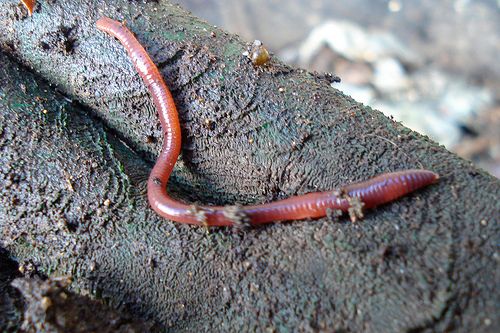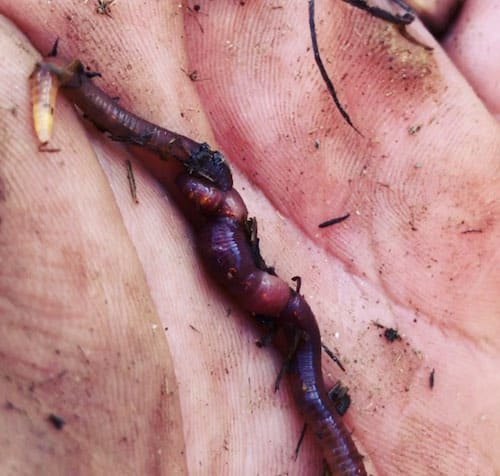Organic Composting with Red Wiggler Worms - Boost Your Garden's Development
Organic Composting with Red Wiggler Worms - Boost Your Garden's Development
Blog Article
Red Wiggler Worms Demystified: Unlocking the Tricks of Vermiculture for Greener Living and Nutrient-Rich Soil
In the realm of sustainable practices for enriching dirt high quality and promoting eco-conscious living, red wiggler worms play a critical yet typically overlooked duty. These humble animals have the exceptional capacity to change natural waste right into nutrient-rich castings that offer as a potent natural fertilizer. By delving right into the world of vermiculture, one can uncover a myriad of benefits that prolong far past conventional composting approaches. Understanding the ins and outs of looking after these worms, enhancing their environment, and harnessing their spreadings can result in a greener lifestyle and healthier dirt for plants to flourish.
The Role of Red Wiggler Worms
Red Wiggler worms play a vital function in composting systems by successfully breaking down organic issue right into nutrient-rich spreadings. These starved eaters take in a range of organic products, such as kitchen scraps, lawn waste, and paper items. As they feed, the worms' digestive procedures break down the natural issue right into a fine, dark, and nutrient-dense material understood as worm castings or vermicompost.
The spreadings generated by Red Wiggler worms are highly helpful for soil health and plant development. They are abundant in necessary nutrients like phosphorus, potassium, and nitrogen, which are important for supporting healthy and balanced plant advancement. In addition, worm castings consist of useful microorganisms and enzymes that help improve soil structure, rise water retention, and improve nutrient uptake by plants.
Advantages of Vermicomposting

It boosts dirt framework, boosts dirt aeration, and boosts dirt wetness retention. Vermicompost likewise improves the soil with vital nutrients like nitrogen, phosphorus, and potassium, promoting plant growth and overall soil fertility.
Additionally, vermicomposting assistances lasting horticulture practices by offering a all-natural and chemical-free alternative to synthetic fertilizers. Red Wiggler Worms. This eco-friendly technique not just improves the soil but likewise helps in reducing dependence on hazardous chemicals, promoting a greener and much more lasting way of horticulture
Establishing Up a Worm Container
When establishing a worm container for vermicomposting, correct configuration is essential to make certain the success of the composting process. The primary step in establishing a worm container is picking a suitable container. This can be a plastic container or wood box that provides enough room for the worms to move and has proper drainage openings to stop waterlogging. Next, a bedding product such as shredded paper, cardboard, or coconut coir ought to be contributed to the bin. This bed linens offers a comfy setting for the worms and helps keep moisture degrees.
After adding the bedding, introduce the red wiggler worms to the container. The worms should then be provided with food scraps such as fruit and veggie peels, coffee premises, and eggshells.
Routinely check the wetness degrees and temperature level in the worm container to guarantee optimal conditions for the worms. With appropriate setup and upkeep, the worm bin will successfully transform organic waste into nutrient-rich garden compost for your plants and garden.
Gathering Worm Castings
To efficiently collect nutrient-rich worm castings from your vermicomposting system, an organized harvesting method is important. When it comes time to harvest the worm castings, there are a couple of vital actions to follow to make certain an effective process. To start with, quit adding fresh food scraps away of the worm bin for a pair of weeks before harvesting. This motivates the worms to migrate to the side with fresh bed linen and food, making it less complicated to my site dig the castings from the opposite.

Troubleshooting Common Issues
Recognizing and addressing usual challenges that may emerge during the vermicomposting procedure is crucial for preserving a healthy and productive worm container. One typical issue you can look here that vermicomposters encounter is overfeeding. Including excess food scraps can bring about a buildup of wetness and level of acidity in the worm bin, potentially hurting the worms. To avoid this, feed the worms in moderation, making sure that the food scraps are sufficiently broken down prior to adding extra. An additional issue is undesirable smells originating from the worm container. Foul smells suggest anaerobic problems, normally brought on by overwatering or inadequate ventilation. To treat this, change the dampness degrees by including completely dry bed linens materials like shredded newspaper or cardboard and boost aeration by turning the bed linen frequently.
Additionally, if the worm population is decreasing or the worms appear harmful, maybe as a result of ecological stressors such as extreme temperature levels or pH levels. Keeping track of these factors and making required adjustments is vital for the well-being of the worms. By troubleshooting these usual problems immediately, vermicomposters can make certain a effective and smooth vermicomposting procedure while preserving a growing worm population.

Final Thought
In verdict, red wiggler worms play a vital function in vermiculture by breaking down organic matter right into nutrient-rich soil. Setting up a worm bin is important for effective vermiculture, and collecting worm spreadings gives beneficial garden compost for gardening.
As they feed, the worms' digestive system procedures damage down the organic issue into a penalty, dark, hop over to these guys and nutrient-dense material recognized as worm spreadings or vermicompost.
The castings generated by Red Wiggler worms are extremely valuable for dirt health and wellness and plant growth. Adding excess food scraps can lead to a buildup of dampness and acidity in the worm bin, possibly damaging the worms.In addition, if the worm population is declining or the worms appear undesirable, it can be due to environmental stress factors such as extreme temperature levels or pH degrees. Setting up a worm container is essential for successful vermiculture, and collecting worm spreadings provides useful compost for horticulture.
Report this page